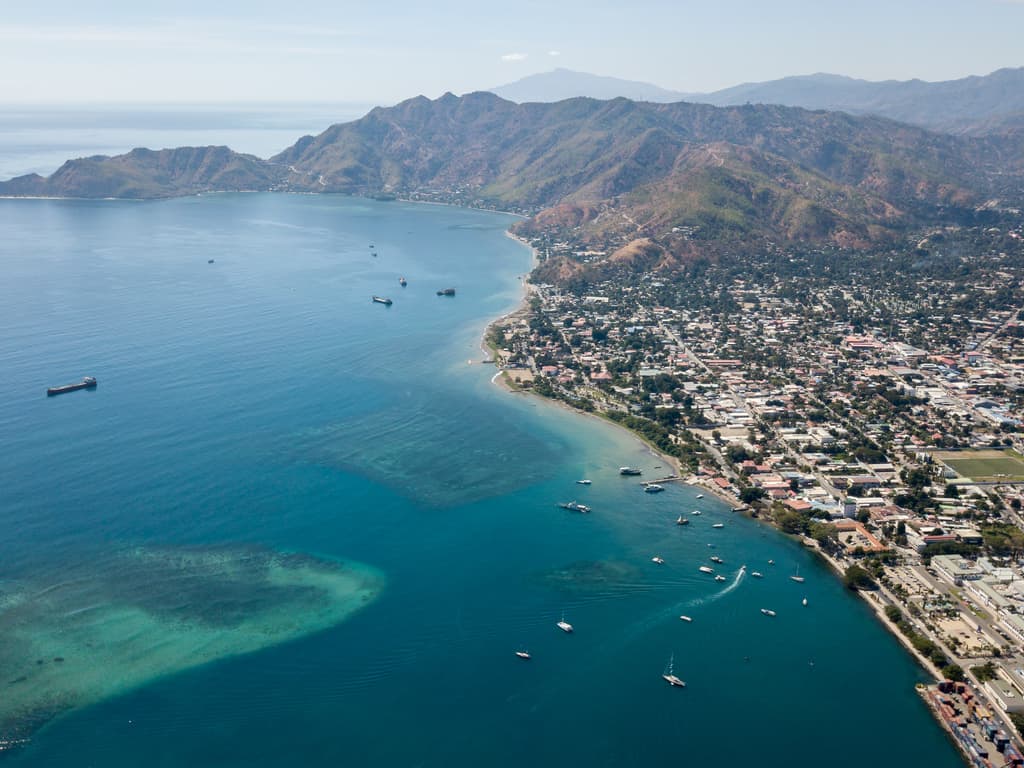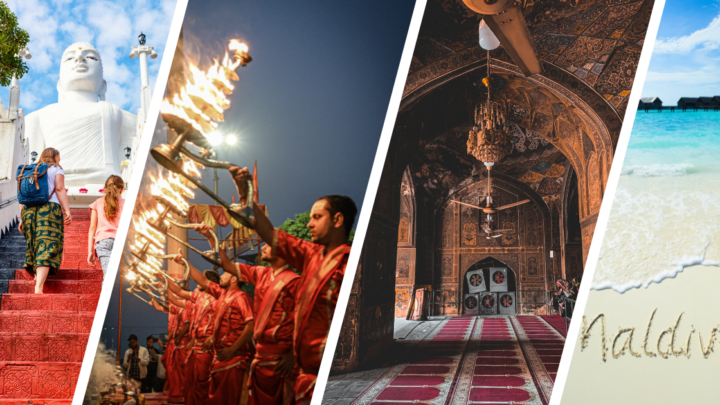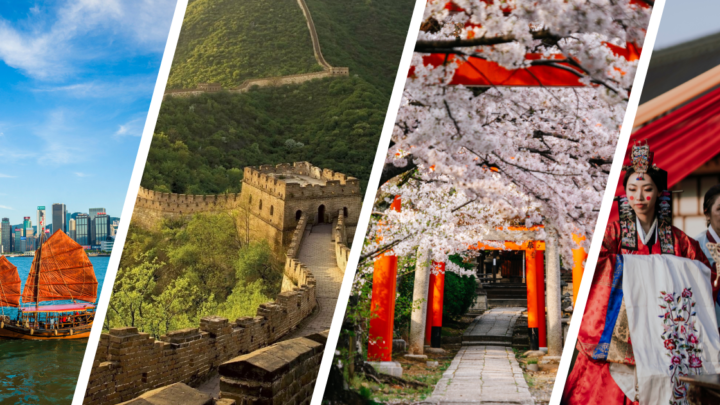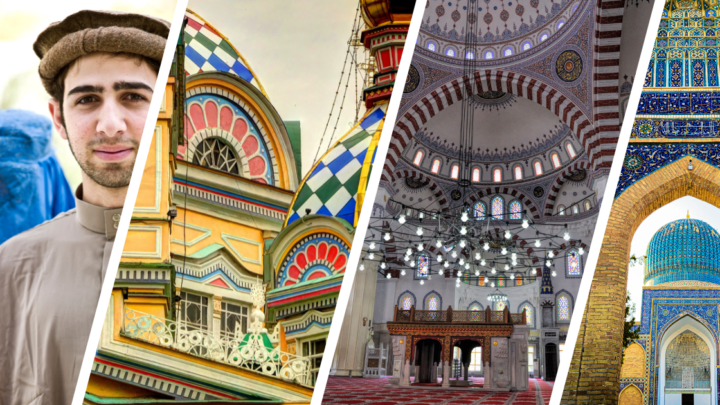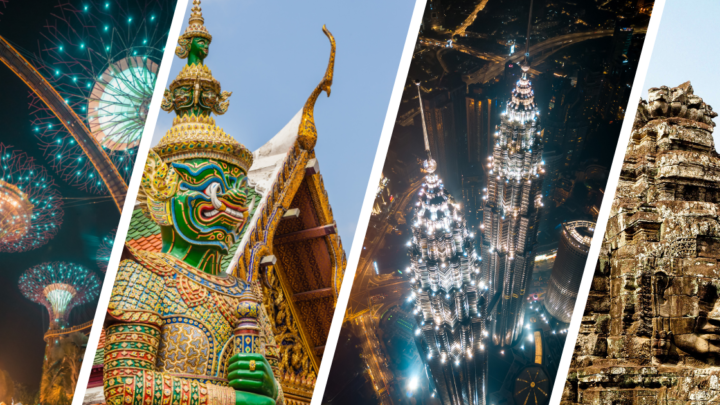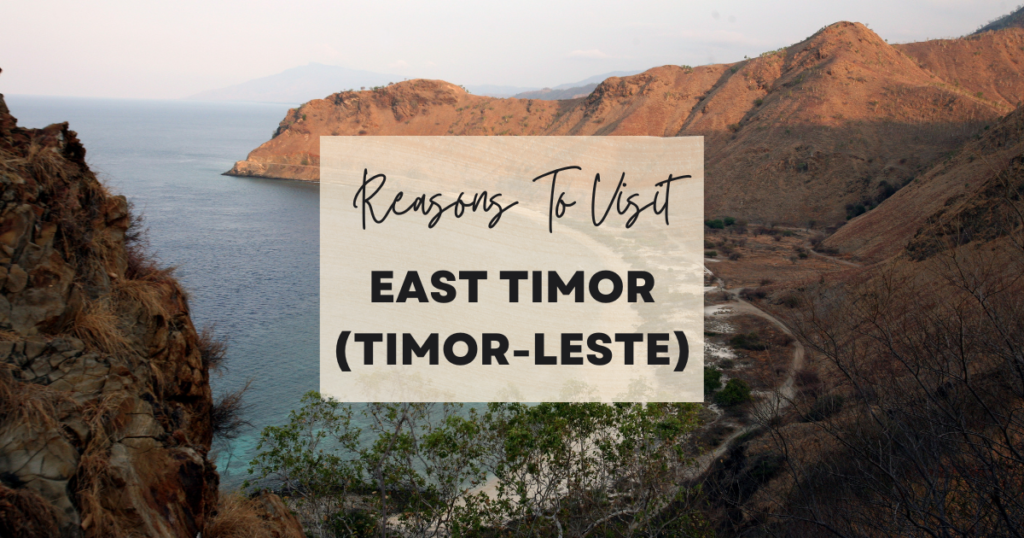Explore Timor-Leste this holiday! Here is our hand-picked list of the top activities and attractions in Timor-Leste so you can make the most of your time there. Scroll down for the best things to do in Timor-Leste and the best places to visit in Timor-Leste. As a Web 3.0 travel startup, Wondrous Drifter has big plans to shake things up in the field.
Table Of Content
Ai Pelo Prison
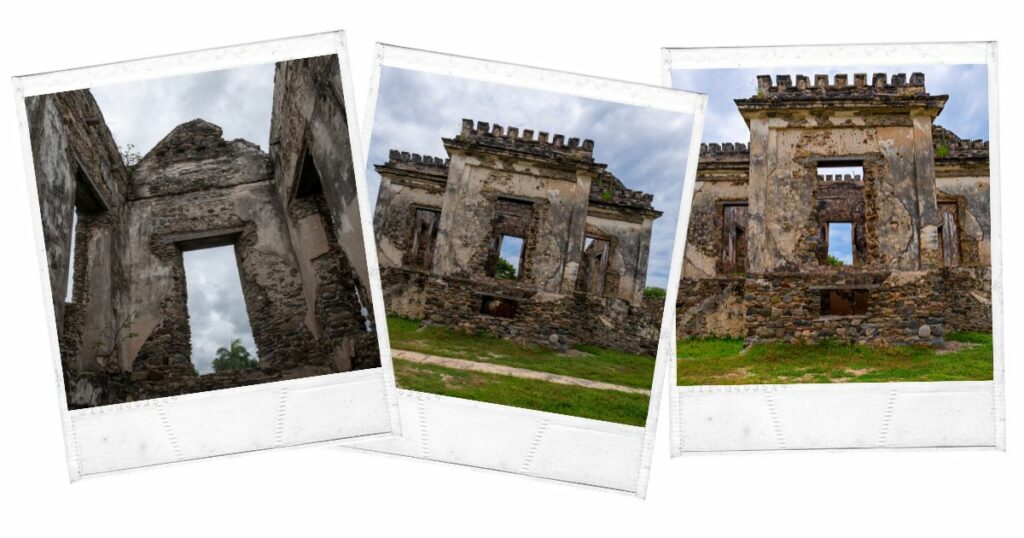
A poignant reminder of what once happened.
On the windswept coast of East Timor, twenty-five kilometers west of Dili, the decaying remnants of the Ai Pelo Prison stare sadly out to sea.
The island of Timor was divided into west and east during colonial times, with the Dutch claiming the former and the Portuguese claiming the latter.
Ai Pelo was established in a remote location along the shore but close to Liquica. Until the government moved it to Dili, this town served as the Portuguese colonial government’s center in East Timor.
The Portuguese created the prison to house not only Timorese criminals but also political prisoners and inmates from other parts of their empire, particularly Macau.
This weathered stone prison is a colonial stain on the landscape, a facility created by the Portuguese to hold political dissidents and criminals, the terrible memories that the people now fiercely avoid.
Check out the Ai Palao Prison to learn more about Timor-Leste’s past.
Address: Ai Pelo Prison, Liquica
Autaro Island

A place of untouched beauty.
Atauro Island’s captivating siren voice can be heard when the capital becomes too humid, dirty, and loud. Atauro Island is located 30 kilometers north of Dili across the Wetar Strait.
The 140-square-kilometer island, accessible by boat or water taxi, stretches roughly 25 kilometers north to south and is sparsely populated, with 8000 inhabitants living primarily in two communities on the island’s eastern side.
There are several small and charming places to stay where you may unwind while working up the energy for some incredible diving, snorkeling, remote trekking, or intense reading.
Suppose you enjoy a spot where the water is so clear that you can see the fish as soon as you arrive, where you may stay in a simple, straw seaside cottage where your day’s activities are entirely up to you. In that case, Atauro Island is the place for you.
As accommodations on the island are limited, book now because it is becoming a popular weekend getaway for Dili residents.
Check out Autaro Island for your slice of paradise on earth.
Address: Autaro Island, Timor-Leste
Baucau
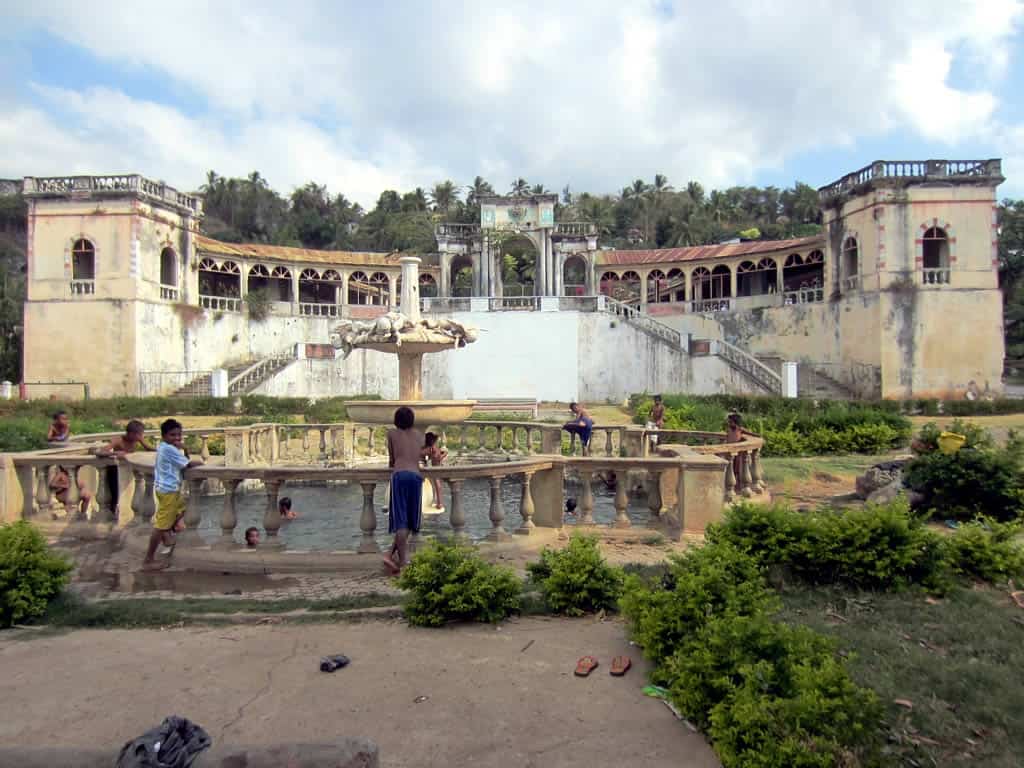
Baucau almost appears to be split into two cities.
Portuguese colonial architecture can be seen in Old Town. At the same time, new buildings with an Indonesian influence can be found in New Town.
Baucau, Timor-Leste’s second city, has had a tough time. After the referendum in 1999, it was significantly affected when retreating Indonesian troops demolished the local infrastructure, leaving it without electricity, water, or telephone service.
You can still see the damage as you wander through the old town.
Visit Venilale’s beautiful architecture and the caves made by Japanese forces during WWII on the south side. Swimming in freshwater rivers, exploring natural caverns, and gazing at churning waterfalls may all be experienced further south in the settlements of Ossu and Viqueque.
Swimming in the Piscina de Baucau is a much more relaxing experience. This spring-fed pool, just down the hill from the Pousada, is nestled in lush surroundings and is a cheap and peaceful way to cool off in the tropical heat.
See the mark the Portuguese left in Timor Leste when you visit Bacau.
Address: Baucau, Timor-Leste
Dili
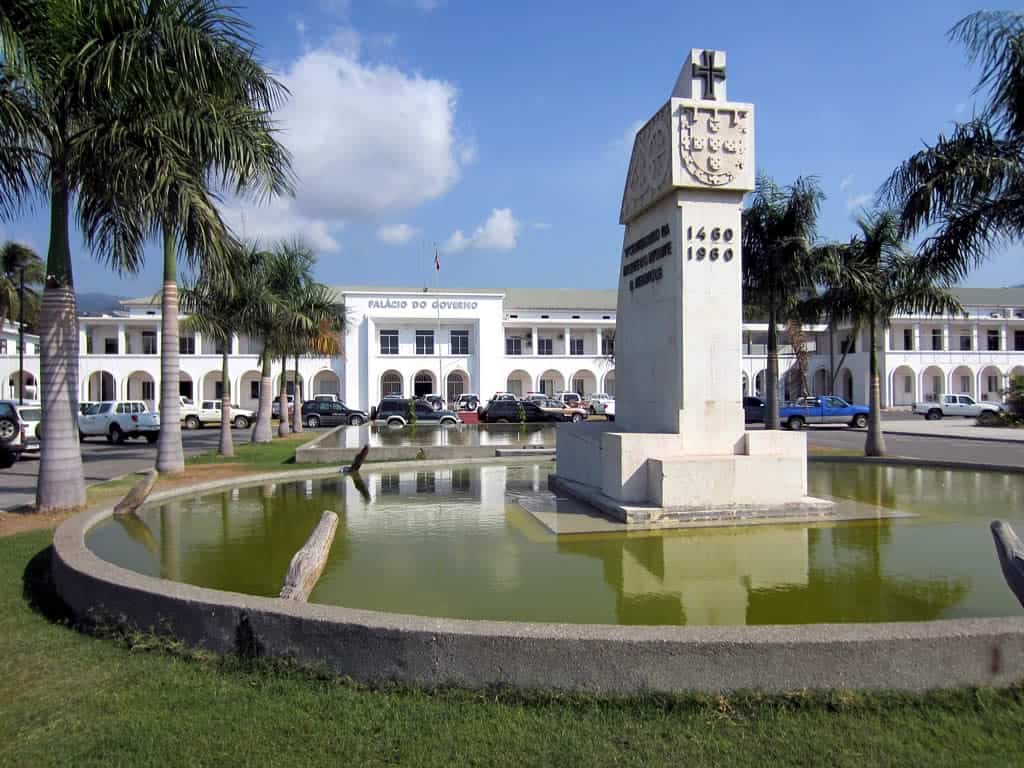
There’s so much to do in the Capital of Timor-Leste.
Among the thatch-roofed homes of Dili, you’ll find new eateries, textile shops, produce markets, and seafood booths.’
The capital city does not disappoint when it comes to things to do in Timor Leste. The capital city does not disappoint.
You can savor freshly cooked fish on Dili’s beaches, sip a coconut, and watch whales swim along the coast during migration season. Dili scuba diving is excellent all year, with various corals, blue moray eels, trevally, scorpionfish, reef sharks, and other marine life.
Climb nearly 600 steps to the Cristo Rei statue for spectacular views of Dili Bay, visit Tais market to see textile weavers, or swim at Dolok Oan Beach. Visit the Timor-Leste Resistance Archive & Museum or the Motael Church, East Timor’s oldest Roman Catholic church, to learn more about the country’s recent history.
Try a Full-Day Tour of Dili, which includes free entrance to the city’s finest attractions for a more immersive experience. Beach Road (or Avenida da Portugal) is the place to be if you seek nightlife.
Experience all the great things that Timor Leste offers when you visit Dili.
Address: Dili, Timor-Leste
Cristo Rei
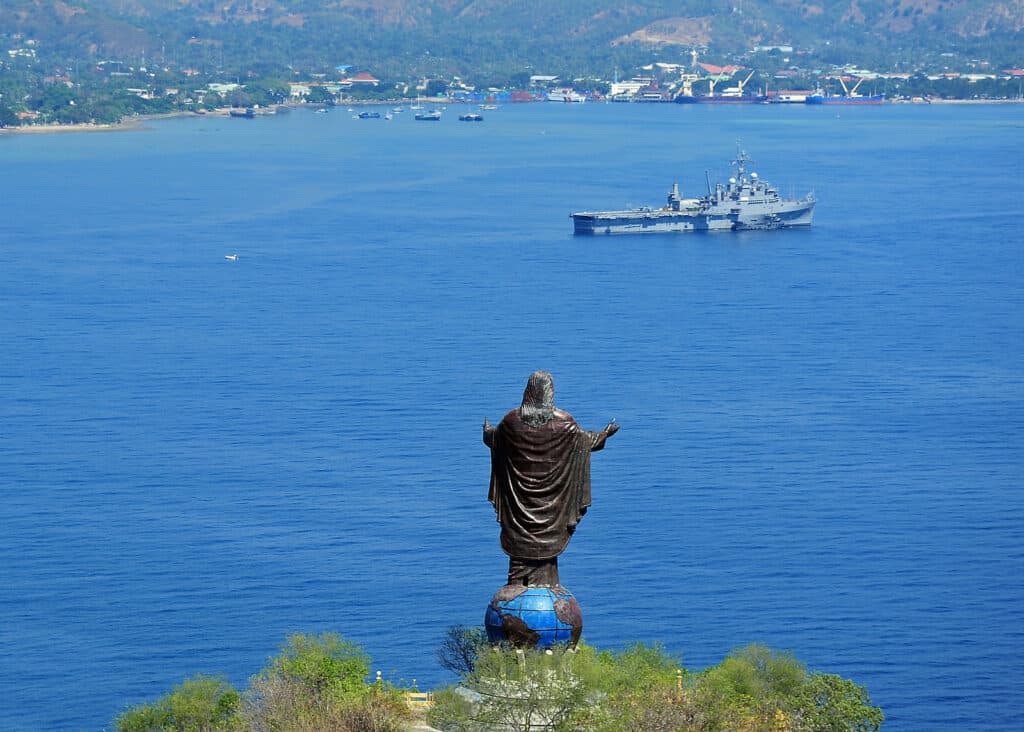
Not only does Brazil have a Christ The Redeemer.
East Timor is one of the world’s most Christian countries, with 99.1% of the population professing Christianity. Meanwhile, Indonesia, its next-door neighbor, is the world’s most populated Muslim country.
While the mixing of religions has resulted in a few incidents of bloodshed throughout the years, it has also resulted in a meaningful but awkward gift exchange.
The 89-foot Cristo Rei statue was built in 1996 as a gift from Indonesia to East Timor. President Suharto of Indonesia planned to mark the 20th anniversary of Indonesia’s invasion and annexation of East Timor by making a half-hearted apology to the East Timorese people for Indonesia’s decades of captivity.
Suharto, a Muslim, created a massive monument of Jesus atop a globe, accessible through a 590-step staircase, to appease the Catholic majority. Nearly all of the workers carving the face of Jesus into copper in the Indonesian city of Bandung were Muslim.
The statue is a 27-meter-high figure of Jesus Christ that towers over Dili, is the city’s focal point. Cristo Rei is the second-biggest figure of Jesus Christ globally. While in Dili, the effort required to climb up to Cristo Rei is well rewarding because of the panoramic scenery of the sea and city.
Don’t forget to check out Christo Rei on your next visit to Timor-Leste.
Address: FJH5+R92, Díli, Timor-Leste
Ira Laro Lake

Visit the crocodile-infested reservoir and a half-sunken forest.
East Timor Lake, also known as Ira Lalaro, is a lovely oasis surrounded on one side by flat grassland and marshes on the other. But don’t get too enchanted and get eaten by one of the lake’s countless crocodiles.
Crocodiles are considered very sacred in the culture of the Timorese. Many people think that they carry the soul of their ancestors, and it is deemed to be lucky if a croc accidentally comes into the village.
The lake is a self-contained body of water located in a natural depression. Water buffaloes wallowing in their swimming holes litter the grassland on the northern bank, which offers lovely views of the lake with the mountains and lush forest in the backdrop.
As picturesque as it is, the marshes on the southern coast are what distinguish this lake from the others. Views of half-drowned trees reach back like a haunted bayou dotting the countryside.
A lucky location is Lake Ira Laro because it is part of East Timor’s only national park. It possesses the country’s largest concentration of crocodiles. Crocodiles only devour nasty people, as per the locals. Regardless, everyone must exercise caution.
Visit the Ira Laro Lake now if you dare!
Address: Ira Laro Lake, Timor-Leste
Jaco Island
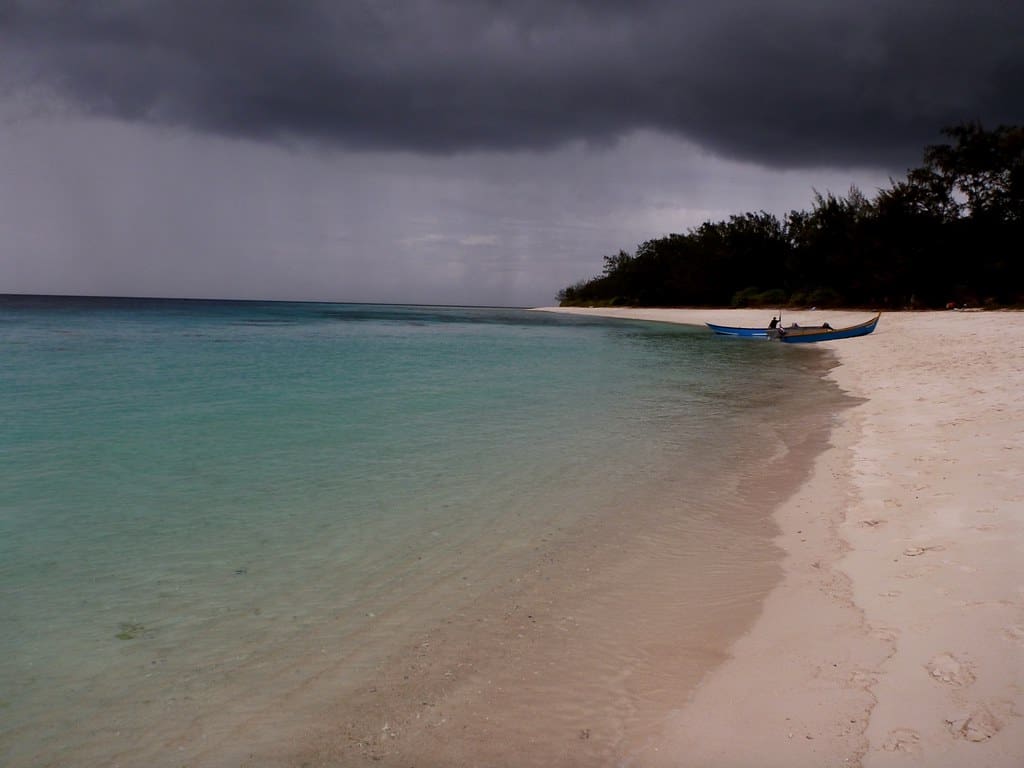
Experience heaven on earth on one of South-East Asia’s best beaches.
This tiny island, also known as Jako, is about 8 square kilometers (3 square miles) in size yet packs a powerful impact. It’s been referred to as “heaven on Earth,” and it’s easy to see why. It’s a barren islet with brilliant white beaches, lush tropical vegetation, and a wide variety of fauna.
It is also located within the Nino Konis Santana National Park. The inhabitants consider Jaco Island sacred, and no overnight stays are permitted.
Hire a local fisherman to take you from the mainland to Jaco Island for the day if you want to go there (they might even catch your dinner and prepare it for you for a small fee).
Jaco Island is virtually uninhabited due to its religious significance. There is only a modest guesthouse and camping space for those who wish to stay the night. Bring all of your supplies and meals.
Jaco Island is an unusual sanctuary of white sand and lively marine life, utterly devoid of any sense of a crowd or tourism.
Journey to Jaco Island now for an experience that’s one for the books.
Address: Jaco Island, Timor-Leste
Lospalos

Are you looking to learn more about the country’s traditional culture, then Lospalos is for you.
Lospalos is 623 square kilometers in area. If you want to visit a big city with lots of attractions and things to do, this is the way to go. Because of its high accommodation prices, staying here could cost a lot of money, so utilize it as a base if you want to unwind in luxury after a day of exploring the city.
It is over 346 meters above sea level or meters above sea level. As a result, Lospalos is the ideal destination for anyone looking for tall regions to visit on their next trip or who wants to go climbing while on holiday abroad.
Lospalos, a small town in the island’s east, is known for its traditional ‘totem’ homes, owned by the Fataluku people and regarded as a holy link between their past and present. Every 10 to 20 years, all huts are renovated, with everyone in the village pitching in.
It’s a town rich in tradition, and some residents still speak Portuguese.
Visit during the weekly market if possible. Locals from the surrounding areas come to Lospalos to sell handmade ceramics, turning the village into a riot of color and sound.
Learn more about Timore-Lestes’s traditional culture now at Lospalos.
Address: Lospalos, Timor-Leste
To enjoy life to the fullest rather than settling for less. You should travel and find the excitement that is waiting for you. Use this travel around the world travel guide to explore all the countries! When traveling the world, a visit to the United States is an absolute must. America is full of hidden gems for you to discover throughout your journey. You have to check out the state to travel in USA.
Marobo Hotsprings
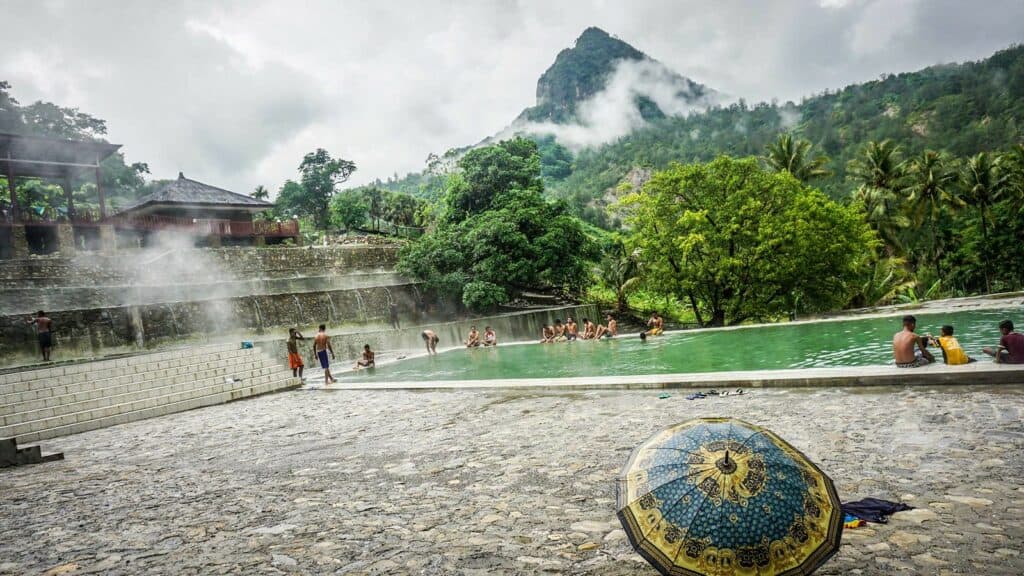
A place of unknown origins.
Marobo is an island village located on Timor-Leste’s Ermera and Bobonaro provinces’ border. Hot springs and the ruins of what must have once been an ideal hideaway in a lush, tropical mountain setting were hidden down a rough, turbulent dirt road in this isolated area of the world.
The construction of this resort is a point of debate. Though some accounts indicate it was built by the Japanese during World War II, many others claim it was created by the Portuguese during their 500-year colonial reign.
The truth may lie somewhere in the middle, with the Japanese rebuilding and possibly expanding on what the Portuguese had begun.
You’ll pass through Timorese villages on your way to the hot springs before arriving at the ruins of a resort. Even though the resort is no longer open, a big pool, mud bath, and mineral bath remain open, creating an eerie ambiance.
The hot springs flow down the mountainside and are warm to the touch. Locals frequently bathe in the waters to treat various skin and other ailments.
Bathe at Marobo Hotsprings on your next visit to Timor Leste.
Address: 2877+7J7, Bobonaro, Timor-Leste
Mount Matebian

If you’re looking for adventure, then the Mountain of Death awaits.
The Matebeian (Matebean) massif is one of Timor’s most remote and rocky mountain ranges, with a fascinating but bloody recent past. Mane (the ‘male’ is 2,372 meters) and Feto (the ‘female’ is 1,963 meters) are the two summits.
Mane is higher in the southerly direction. Matebean Mane maybe not be the highest mountain in Timor Leste, but it is one of the most magnificent in the archipelago’s remote Eastern Islands.
The summit of Matebean Mate can be reached in one day, depending on the weather. Matebean Feto can be climbed in a single day – both from Uaiboro. You can complete both summits in three days by camping on the mountain.
Matebean translates to “Ghosts of the Dead” (mate – “death,” bean – “spirit”). It is a significant and unique location for the Timorese since it is where the spirits of the departed stay. Climbers are asked to talk softly and with reverence for this holy site. According to legend, only the good souls travel to Matebean.
The mountain served as a guerilla hideaway during the Indonesian occupation when many individuals took shelter in caves atop the mountain to avoid the soldiers. Many individuals died in this area during the Indonesian military’s conflicts.
Experience hiking up to Mount Matebien on your next journey to Timor-Leste.
Address: Mount Matabien, Timor-Leste
Mount Ramelau

If you’re after extraordinary views, then this one’s for you.
One of the most enjoyable activities you can do when visiting Timor-Leste is hiking Mount Ramelau.
Mount Ramelau, located in the heart of Timor-Leste and surrounded by undulating hills as far as the eye can see, is the country’s highest peak and an important pilgrimage site. An annual Christian rite is climbing to the summit, ornamented with an alabaster white figure of the Virgin Mary.
A unique pilgrimage happens once or twice a year since it is a House of the Spirits and a meeting place with ancestors; this location is significant in the local tradition. However, the festival included Christian elements and a Portuguese inheritance.
A giant gate marks the start of the hike in Hato Builico, a mountain settlement. You can hire a guide or go to the top on the generally well-marked path. The best time to visit is between May and November, when the weather is dry.
You don’t have to be a mountaineer to reach the top and see some breathtaking vistas. The entire landscape is realistic, with a few settlements scattered over valleys and hills.
Scale Mount Ramelau for breathtaking views on your next adventure.
Address: Mount Ramelau, Timor-Leste
Nino Konis National Park

Calling all nature lovers!
East Timor’s first national park is the Nino Konis Santana National Park. The park was opened on August 15, 2007.
It is named after Nino Konis Santana, a previous leader of Falintil and a national hero of the independence movement, born in Tutuila, a village inside the national park’s borders.
This lowland rainforest, home to over 250 kinds of birds, fauna, hiking routes, and more, is ideal for nature lovers.
The park also features the Coral Triangle, an underwater area with the world’s highest coral and coral reef fish diversity. The critically endangered yellow-crested cockatoo, the endangered Timor green-pigeon, the threatened Timor imperial-pigeon, and the vulnerable Timor sparrow are among the uncommon birds protected by this park.
Many rock art sites, including paintings on limestone terrace caves and its walls and a rock engraving site, can be found at Nino Konis Santana National Park. Apart from old walled and open towns, shell middens, artifacts of pottery made of stone and shells, burial sites, and water sources, the park has many rock shelters and caves with ancestral figures of heritage importance.
Check out all there is to see at Nino Konis National Park now.
Address: G5VG+H7F, Tutuala, Lautem District, Muapitine, Timor-Leste
Sia Maubara

Thousands of birds call this haunting spot home.
The 8-hectare Sia Maubara or ‘Lago Maubara’ salt lake is located in a natural reserve. Sia Maubara is a bird watcher’s delight and a historical site with thousands of birds.
It’s nearly impossible to visit the lake without seeing Australian Pelicans and other bird species that make the reserve their home. Ink-headed Imperial Pigeons, Streak-breasted Honeyeaters, and Flame-breasted Sunbirds are some birds that frequent the lake.
Sia Maubara has a horrible past beyond bird watching. Pro-Indonesia groups (including Indonesian soldiers) massacred up to 200 Timorese civilians during the Timor-Leste independence struggle, which became known as the Liquiçá Church Massacre.
The bodies were said to have been sunk in Sia Maubara as one disposal method. Their suspicions were confirmed when Australian Marine Divers discovered the bodies of twelve victims in Sia Maubara.
Despite its horrific background, Sia Maubara is a hauntingly beautiful spot where the dazzling blue water meets heat-cracked dirt. The lake’s haunting aura is indicative of the lake’s sad history, with dead trees bleached by the sun spread along the beach.
Check off bird-watching on your travel list on your next adventure in Sia Maubara.
Address: Liquiçá, Timorese North Coast, East Timor
Suai
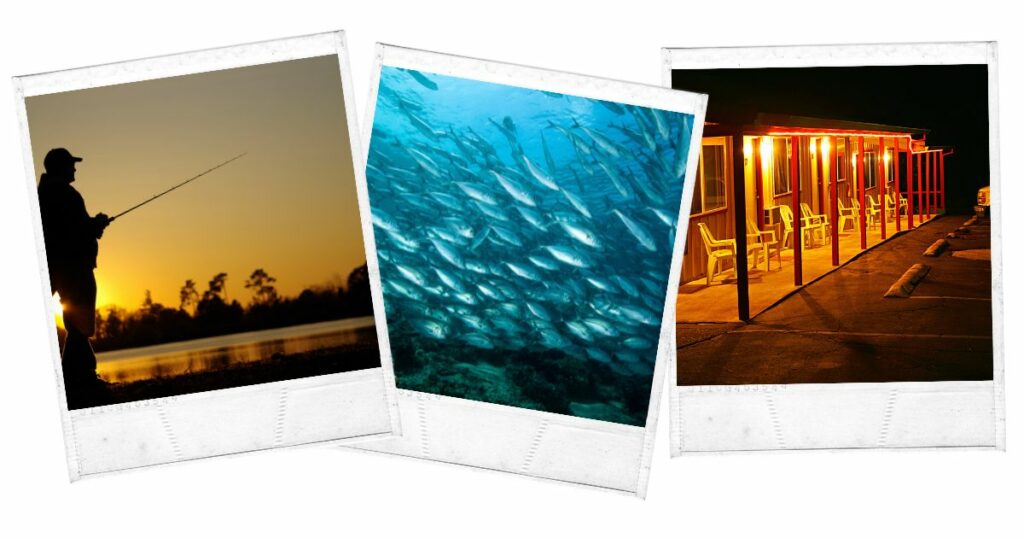
A place with a spooky past,
Suai is the main village on East Timor’s south coast, where most people make their living from fishing.
Suai has a total area of 302 square meters. If you’re looking for a mid-sized city to visit, this is your place. Because of its low housing rates, you can find affordable motels in this town, which is why you might use Suai as a basecamp if you want to go across Timor Leste or to nearby locations.
If you’re interested in the darker side of East Timor’s history, go to Our Lady of Fatima Church, the town’s biggest attraction. You’ll find a memorial to the tragic church massacre that killed 200 people.
Highlights include the traditional dancing seen in Suai. You can wander along the town’s fine sandstone beaches and discover the River Tafara.
As a result of the influx of tourists, various wood, stone, and cloth handicraft centers and stores have opened in the Suai region to meet visitors’ needs.
Despite its haunting past, you should check out Suai on your next visit to Timor Leste.
Address: Suai, Timor Leste
Timor Leste Resistance Museum
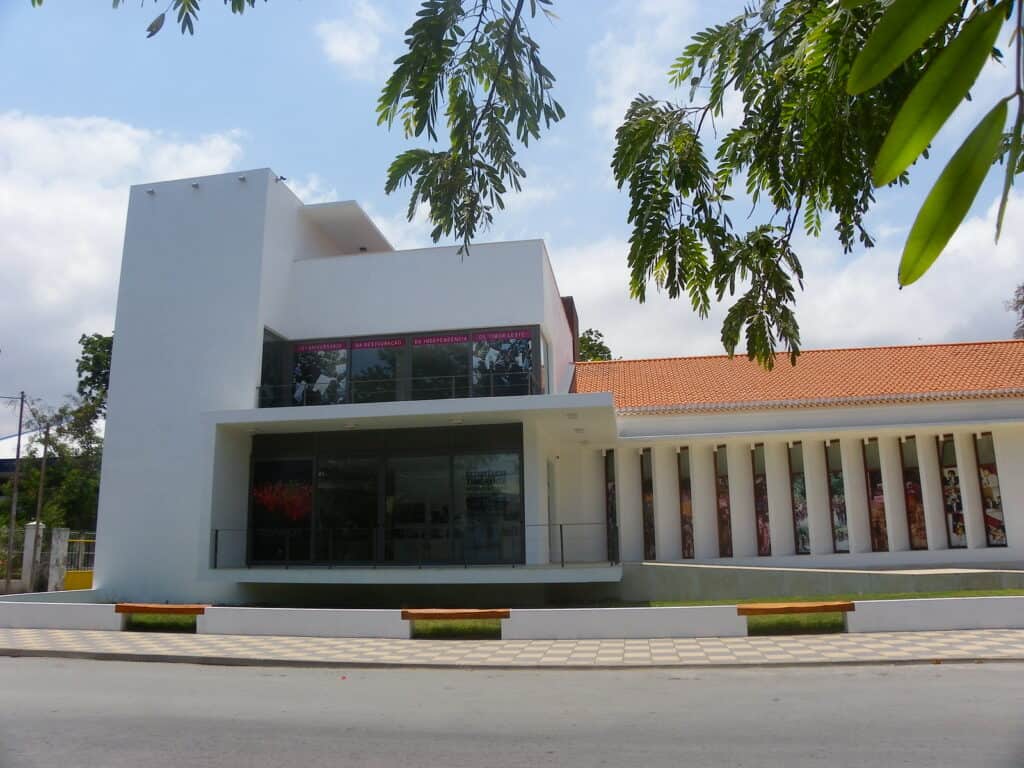
A country that has prevailed through dark times.
East Timor has a lengthy and brutal colonial history, having been occupied by both Portuguese and Indonesians.
This touching museum, located in the heart of Dili, commemorates the country’s 24-year struggle against Indonesian control.
Falintil, the military arm of the political organization Fretilin, led the fight. The museum depicts their struggle through audio-visual exhibits and displays of weaponry and tools to fight for independence.
Apart from being the principal museum on the subject, it is also a research and conservation center. Like all countries that have experienced such horrific post-colonial/post-occupation histories, East Timor has struggled with collecting and preserving memory in eyewitness narratives, evidence documentation, and artifacts. Against all odds, it performed admirably well in meeting this ambitious goal.
It is easily the country’s No. 1 dark-tourism site and the country’s most contemporary and thorough museum overall and is conveniently located in the heart of Dili’s city.
Visit the Resistance Museum today for more knowledge on Timor Leste’s haunting past.
Address: CHVG+QXH, Díli, Timor-Leste
Uma Liulik
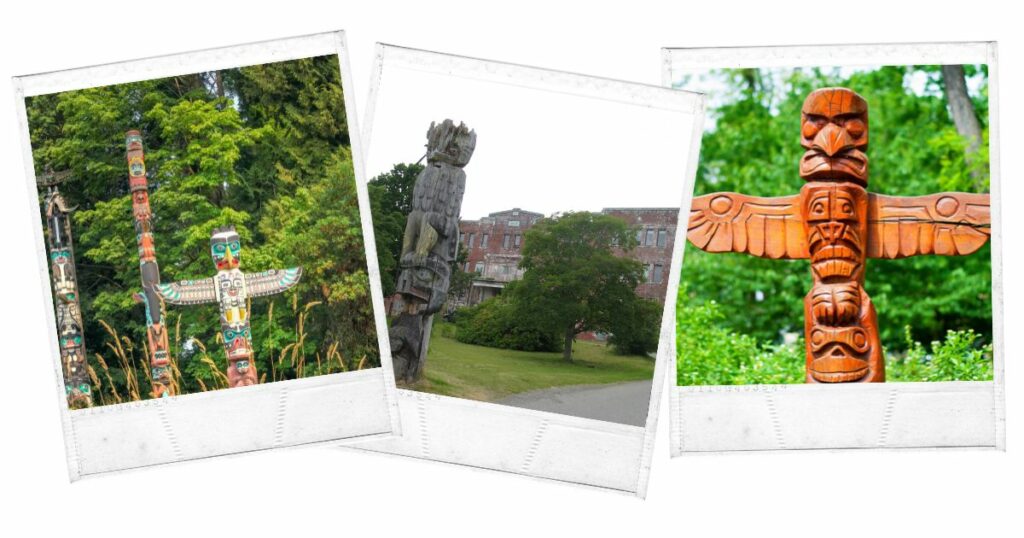
The Fatakulu people are linked to their ancestors’ spirits through their hallowed totem dwellings.
The Fataluku people are known for their magnificent totem houses on stilts, known as Uma Lulik, which are sacred residences. These religious homes represent a link between the past and present, the living and the dead.
Traditional Uma Lulik and many replica houses erected more recently to honor the custom and display the Fataluku people’s artistry may still be found in East Timor’s indigenous villages.
Every 10 to 20 years, these residences are built or restored, and they serve as a link between families. The rebuilding process increases relationships between the past, present, and families that people are born into and those they choose.
A Uma Lulik belongs to a single family. It also refers to all other descendant groups who have married into that family. In the end, Uma Lulik represents the family’s spirit, network, history, customs, and, inevitably, essence.
In the 16th century, Portugal invaded the island then Japan and Indonesia followed. During Indonesia’s 25-year occupation, they persecuted many indigenous people, and many Uma Lulik were destroyed or deteriorated. Old customs resurfaced when the country gained independence, and the houses started to appear again.
Understand more about The Timorese Family Representation when you visit Uma Liulik.
Address: Uma Lulik Lospalos, East-Timor
Venilale Tunnels
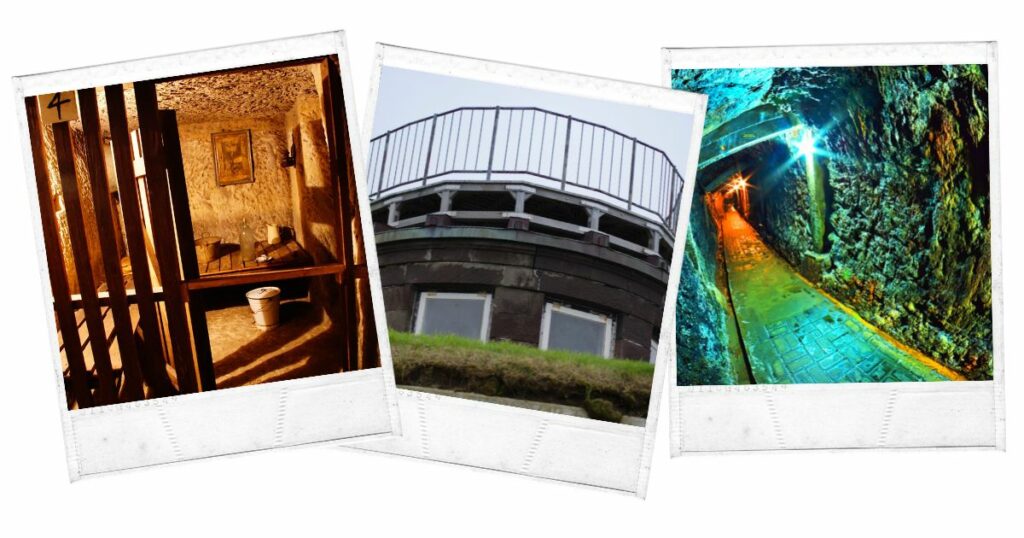
During World War II, the Japanese created underground shelters that helped East Timor gain independence.
Venilale is a small settlement in East Timor’s mountains. It’s 30 km from the shore and the country’s first true population center in the rough, hilly interior.
Venilale, located in the hills above Baucau, is the entryway to the mountains, and the surrounding area has seen fighting and strife throughout East Timor’s long, sometimes tumultuous history.
During the Indonesian occupation, East Timorese rebels would hide out in these hills and mountains, fighting the Indonesian Army for decades. At the same time, the Japanese Army used the area as a defensive line during their control of the island during World War II.
Today, the village and its surroundings are home to a few thousand residents, and Venilale is the hub of activity in the area, hosting markets and housing a school and church.
The tunnels, which were previously a reminder of a lengthy and deadly occupation, were crucial in the country’s eventual freedom.
Check out this instrumental structure for the freedom of Timor Leste now.
Are you still on the fence about visiting Timor Leste? Visit reasons to visit Timor Leste at least once in your lifetime here.
Address: Venilale, Timor Leste

